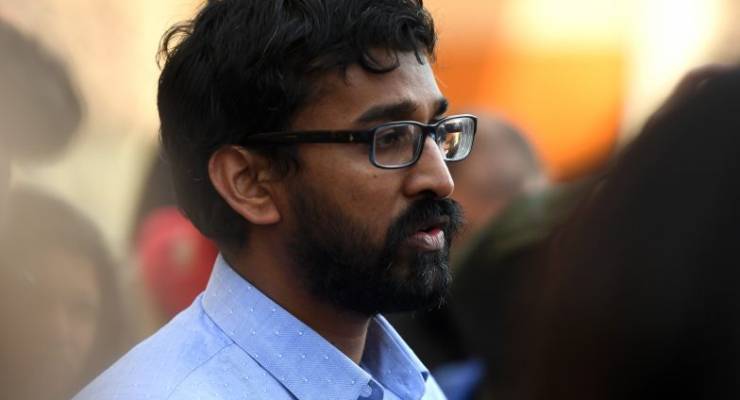
One night in September last year, about 20 Sri Lankan asylum seekers were quietly spirited onto planes and deported. Unlike the Biloela family, whose case has elicited a groundswell of public sympathy, there were no protesters on the tarmac or dramatic, last-ditch legal battles.
Instead, it was just business as usual for Australia’s border protection regime where, according to activists, lives are being upended by a system designed and built on hard-nosed bureaucratic pragmatism.
From deportation to disappearance
One of those deported last September was Joel*, who had spent more than five years in various immigration detention centres across Australia. Before leaving Sri Lanka, Joel alleges he was beaten, tortured and sexually assaulted by police and henchmen of a powerful politician.
Now, Joel has disappeared. Nick Stephenson, a refugee advocate who befriended Joel while he was in Melbourne Immigration Transit Accommodation (MITA), and visited him in Sri Lanka earlier this year, said the two had been communicating daily via Facebook and WhatsApp until July this year, when the communication abruptly stopped.
“It’s highly irregular for him to go completely off the grid like this”, Stephenson said. Other advocates and friends in Australia and Sri Lanka have been unable to get through to Joel. Stephenson has tried to ask family members to check in on him but is yet to hear back.
While in detention, Joel had access to medication and some psychiatric support, both of which he has been unable to receive in Sri Lanka. Stephenson said that when he visited Joel earlier this year, his mental health had deteriorated.
“He was really neurotic, really anxious, and couldn’t hold a conversation for more than a couple of minutes,” Stephenson said.
Joel has a court date set for November — asylum seekers who are sent back to Sri Lanka when their claims are rejected face, amongst other things, criminal proceedings for leaving the country unlawfully. But it’s unclear whether he’ll be there.
A secret deportation
Sylvia’s* husband came to Australia as an asylum seeker from Sri Lanka eight years ago, and has been here on a bridging visa ever since. Their daughter, who is on a student visa, is also seeking asylum. Sylvie made a protection claim, but when she arrived at the airport claiming asylum, they did not consider her application, instead attempting to put her straight back on a plane to Sri Lanka. Aran Mylvaganam, from the Tamil Refugee Council, says this is becoming a common practice for Border Force.
“Nowadays, when people come with invalid visas, they just deport them, which is breaking international conventions. This is the second time in the last couple of months, that people that sought asylum at the airport were deported straight away,” Mylvaganam told Crikey.
When Border Force tried to deport her, Sylvie attempted suicide by overdosing on medication, while on the phone with her daughter. When the phone call cut off, Sylvie’s family was kept in the dark for some 15 hours. Finally, at 3am, a Serco officer called Sylvie’s daughter informing her that her mother was alive.
The family were not given any further information about her whereabouts. Stephenson, who was assisting the family, rightly suspected she would eventually be taken to MITA. But trying to get in contact with Sylvie was a “bureaucratic nightmare”, Stephenson says.
To visit someone in MITA, you first need to create an “ImmiAccount” which enables use of Home Affairs online portal, a step which can trip up some asylum seekers with limited English language skills, or experience navigating labyrinthine state bureaucracies. Then you need to book a visit five days in advance, to be approved at the centre’s discretion. Sylvie’s family weren’t sure whether they had five days.
It took several days of unanswered calls and visit requests from numerous advocates, and the involvement of Refugee Legal before it was even confirmed Sylvie was at MITA. She was sent back to Sri Lanka without ever getting a chance to see her family.
Mylvaganam said this wasn’t the first time family of an asylum seeker had been kept in the dark in such a situation. In 2015, a Tamil asylum seeker on Nauru, whose husband was on a bridging visa in Australia attempted suicide and was medivaced to Queensland for treatment. It took three days and phone calls to every hospital in the state for her family to find and visit her.
Returned to a climate of fear
Home Affairs and the Department of Foreign Affairs and Trade broadly conclude that Sri Lanka is safe for returned asylum seekers. But both Joel and Sylvie were rightly fearful. The United Nations, and human rights organisations say there is good evidence that disappearances and torture have continued in swathes of the country since the end of the country’s civil war, while many of those allegedly responsible for war crimes are now well-entrenched in the country’s elite.
The politician who set his men on Joel is now a powerful MP. When he was deported to Sri Lanka, Joel was unable to return to his hometown. Sylvie has family members who were killed by Sri Lanka’s security forces and there is still considerable discrimination towards Tamils in her hometown.
But none of that fear was enough for a border protection regime Mylvaganam says has traded compassion for cruelty.
“The way they deal with this is just so cruel,” Mylvaganam said.
A Border Force spokesperson told Crikey in a statement it did not comment on individual cases, but said non-citizens were only deported if the department was satisfied it wouldn’t breach Australia’s non-refoulement obligations. They also said visas could be cancelled if the person provided false information on their applications, that all individuals were given appropriate support while in detention, and people can apply to Border Force to visit individuals in immigration detention.
NOTE: This story had been updated to include a comment from Border Force received after deadline.








All points made in your article are valid HOWEVER the headline states: “Disappearances…(etc.): the truth about border control”, clearly implying to the reader that evidence of Border Control undertaking said “disappearances” is presented therein. Sensational headlines do you no credit, Crikey Editors, particularly given the regular (generally well justified) shellacking handed out to other media platforms for similar grandstanding. Whilst I agree with the content and tone of the article, the headline is deliberately misleading click-bait; I trust that a reposting with a more balanced headline will be issued shortly.
If there was real integrity in the system, there would be Australian follow-up and reporting on asylum seekers sent back to Sri Lanka etc to see how they are faring.